The 12 Most Dangerous Fish in the World
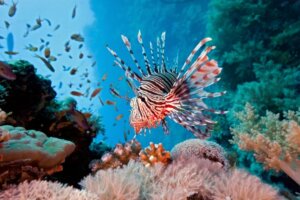

Written and verified by the biologist Samuel Sanchez
Fish are eminently aquatic vertebrates. They’re ectotherms which means they don’t produce metabolic heat, and breathe through their gills. Their surface is covered by scales, they have fins and their body is fusiform, as it’s completely adapted to life and locomotion underwater. More than 33,000 species have been recorded in this group, but do you know about the most dangerous fish in the world?
In their natural habitats, fish tend to feed on small invertebrates smaller than themselves – zooplankton, algae, debris, and other species of fish. None of these animals have humans as their main prey, but some have teeth, toxins, and other characteristics that could seriously injure one. Next up, we’ll show you the 12 most dangerous fish that you wouldn’t want to meet while out for a swim!
1. One of the world’s most dangerous fish: The pufferfish
Pufferfish aren’t dangerous because of their jaws or fangs, but they do stand out for their ability to swell up, and for their strong external spines. However, the real danger of many of these species is the toxic substances that they contain in their internal organs.
We’re talking about tetrodotoxin, a powerful and fast-acting deadly toxin. Studies have shown that this toxic compound is 160,000 times more potent than cocaine and rapidly blocks axonal conduction of sensory neurons. Poisoning in humans is caused by accidental ingestion of pufferfish organs in restaurants that treat raw fish.
There are more than 120 species of pufferfish, divided into 28 different genera.

2. Lionfish
The lionfish doesn’t include only one species, but 9 different ones, which are grouped together in the genus Pterois. Again, we’re talking about fish that don’t stand out for their physical “weapons”, but for the toxins they produce. The effect of its venom is inotropic, which means it affects muscle contractility, and also chronotropic, which means it alters the heart rate. This animal injects toxins through its body spines.
In humans, lionfish venom causes nausea, vomiting, confusion, dizziness, diarrhea, and chest pain. In the most extreme cases, heart failure can occur.

3. White shark (Carcharodon carcharias)
White sharks, also known as the great white shark, are one of the most famous and feared animals in the world. It isn’t surprising, because they’re almost 6 meters (nearly 20 feet) in length on average, a specimen is capable of ingesting up to 14 kilos (30 pounds) of meat with a single bite.
Despite the fact that it contains about 3,000 teeth in its oral environment, it rarely uses them against humans. Attacks on people by this species are not only anecdotal, but are very well documented.
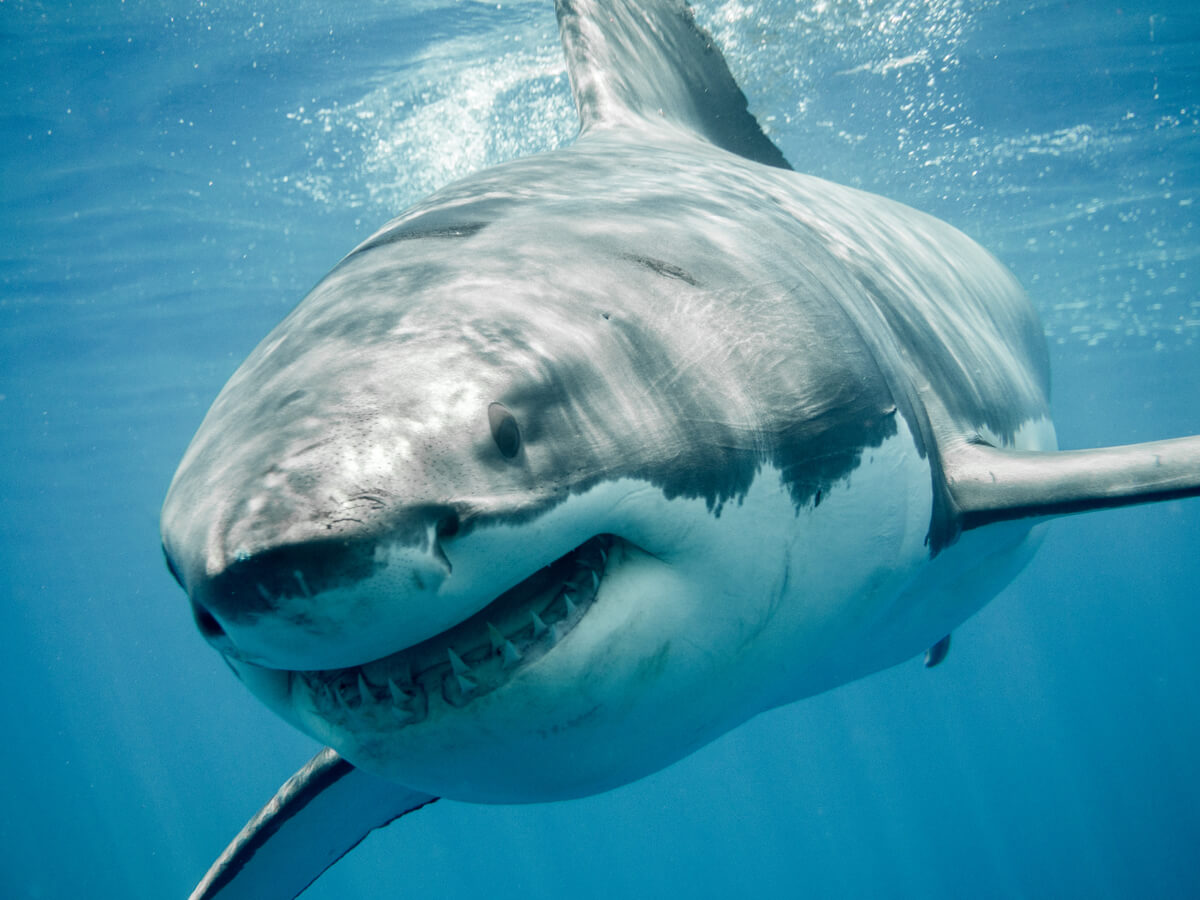
4. Stonefish (Synanceia horrida)
This is another of the most dangerous fish in the world – not because of its jaws, but because of its venom. The stonefish is the most venomous Actinopterygii of the entire marine environment. Due to its neurotoxins and cytotoxins, direct contact with the fins of a specimen of this species is capable of killing a human being. However, it has been a long time since the last death due to contact with a stonefish.
Since 1959 there has been an antivenom against the toxins of these fish. This drastically reduces its deadly potential.

5. Tigerfish (Hydrocynus vittatus)
We move on to freshwater fish, as tigerfish inhabit the land water masses of Africa, where temperatures are high and there’s an abundance of prey. These animals reach up to 1 meter (3.3 feet) in length, have very powerful teeth, and are, incredibly, able to hunt birds in flight, jumping out of the water quickly and efficiently to grab them.
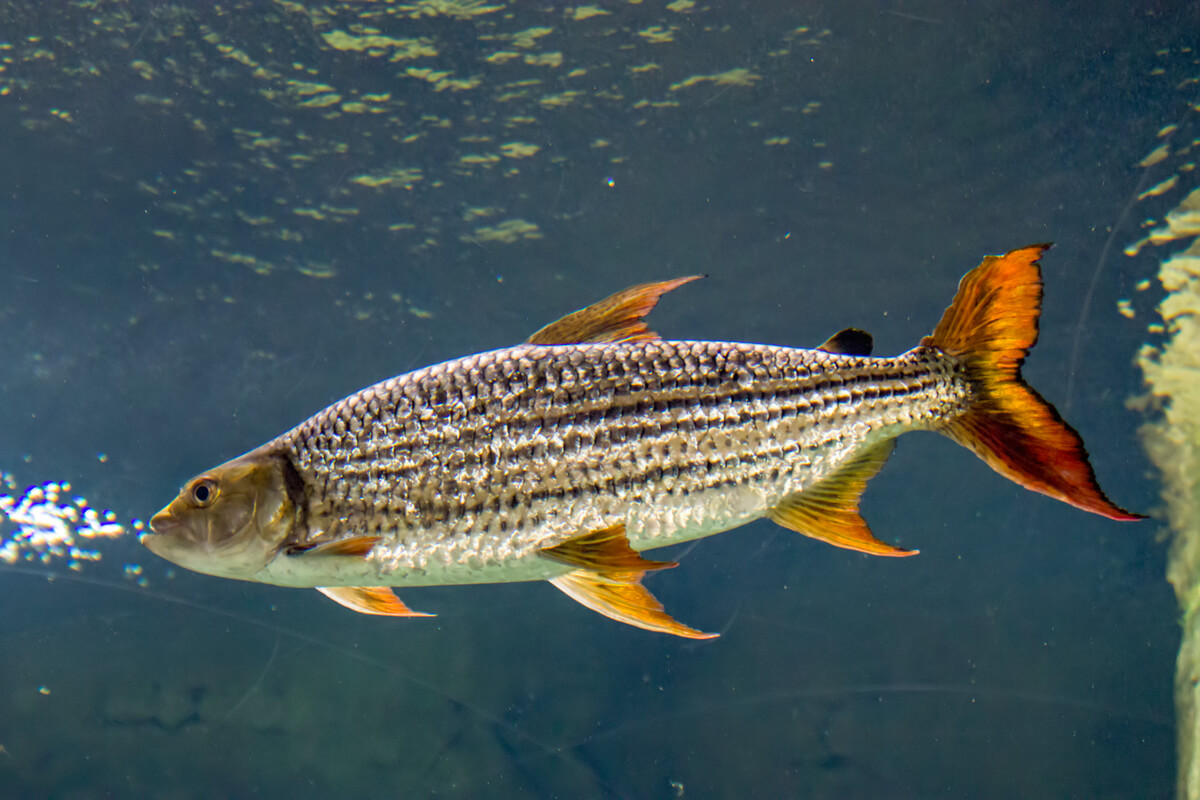
6. Piranhas
The term “piranha” encompasses several species of carnivorous fish that inhabit fresh waters in tropical areas. The most problematic specimens are usually of the genus Pygocentrus, but almost all attacks on humans occur when there’s blood in the water or the victim already has an open wound. It may surprise you, but most species of piranha don’t pose any danger to our species.
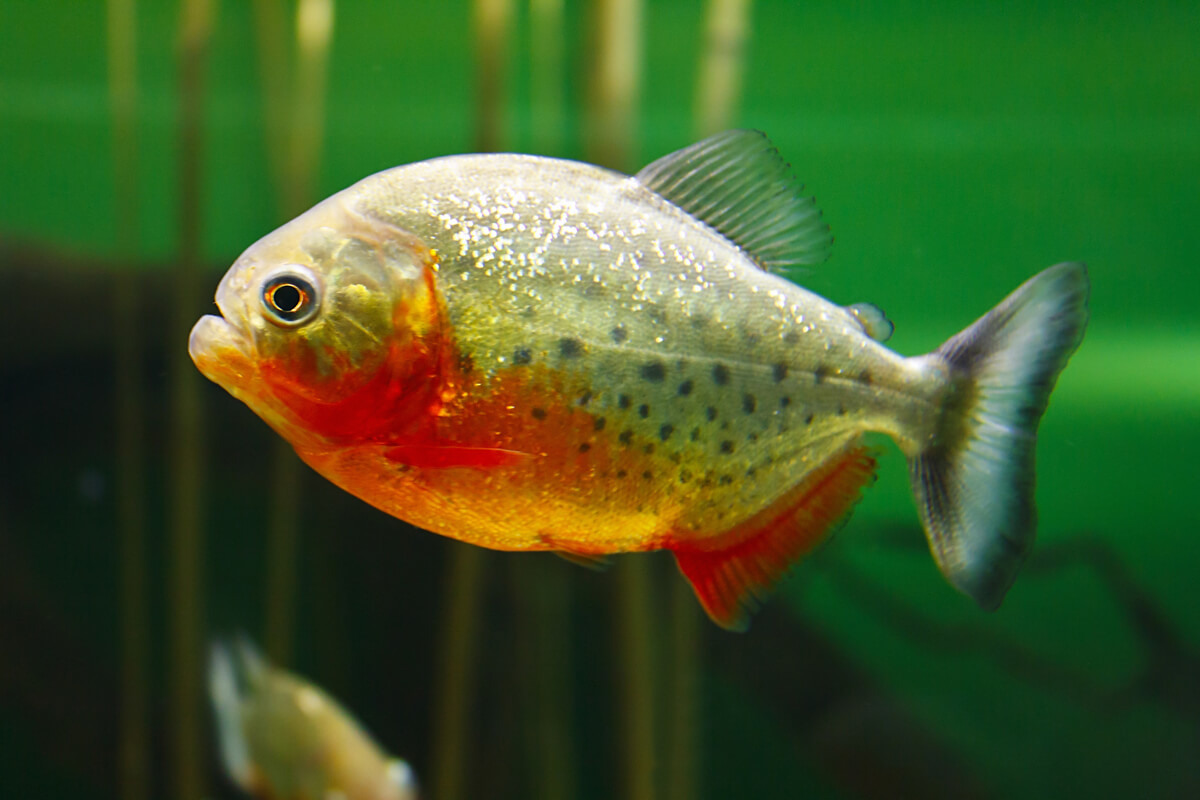
7. Electric eels (Electrophorus electricus)
The next member of the list is totally different to the rest, beause its danger doesn’t lie in its jaws or its poisons. The electric eel is a problem due to its ability to produce electric discharges, based on the reactions that take place in the Sachs and Hut organs. Deaths from these animals are extremely rare, but they have happened.
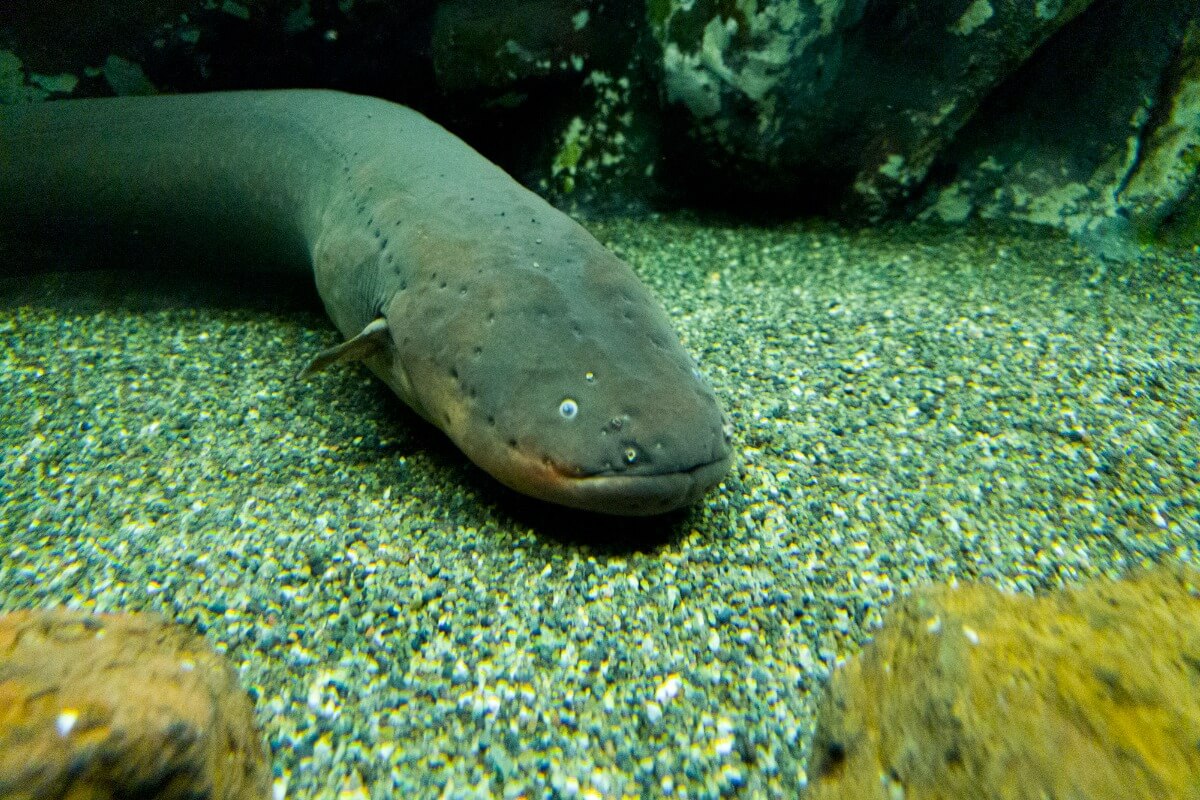
8. Tiger sharks (Galeocerdo cuvier)
The white shark may be the king of the seas, but its relative, the tiger shark, is the one that causes most problems for humans. These cartilaginous fish venture into harbors, canals, and shores, making encounters with people much more common. There are many studies that have recorded human death as a result of attacks by these animals.
This species is considered one of the most dangerous fish in the world. It’s the cause of an average of 50 attacks on human beings a year.
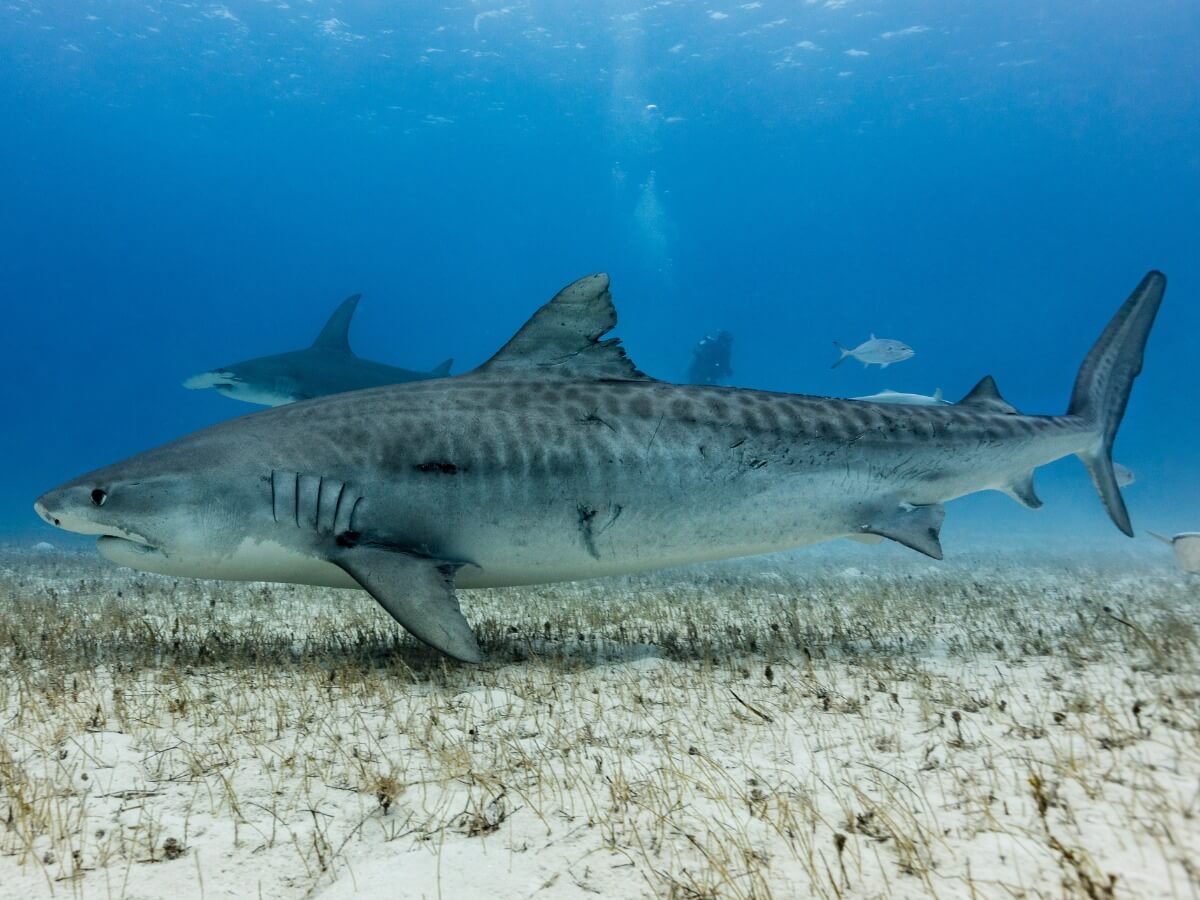
9. Barracuda
Barracudas are included in the genus Sphyraena, a group of fish that have lengths from 50 centimeters (1.64 feet) to just over 1 meter (3.3 feet). They’re the terror of the seas for small fish species, due to their unusual speed – from 0 to 43 kilometers/hour (27 mph) in a single burst – and their pointed teeth don’t give their prey a chance.
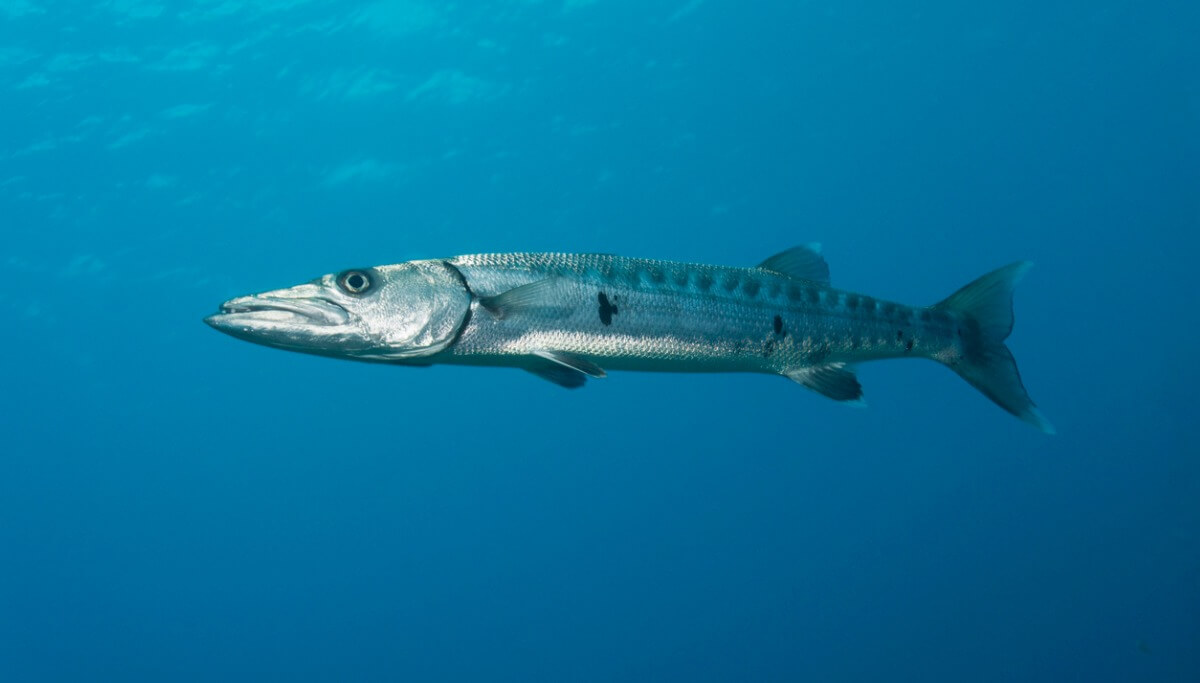
10. Longnose gar (Lepisosteus osseus)
Although it may give us a bit of a shock, the longnose gar doesn’t interact too much with humans. It can reach 200 centimeters (6.6 feet) and is a super predator in the rivers that it inhabits, in the United States. These animals are extremely long-lived, as they can live between 15 and 20 years, with a recorded maximum of 39 years. As a curiosity, it should be noted that they’re becoming popular as pets.
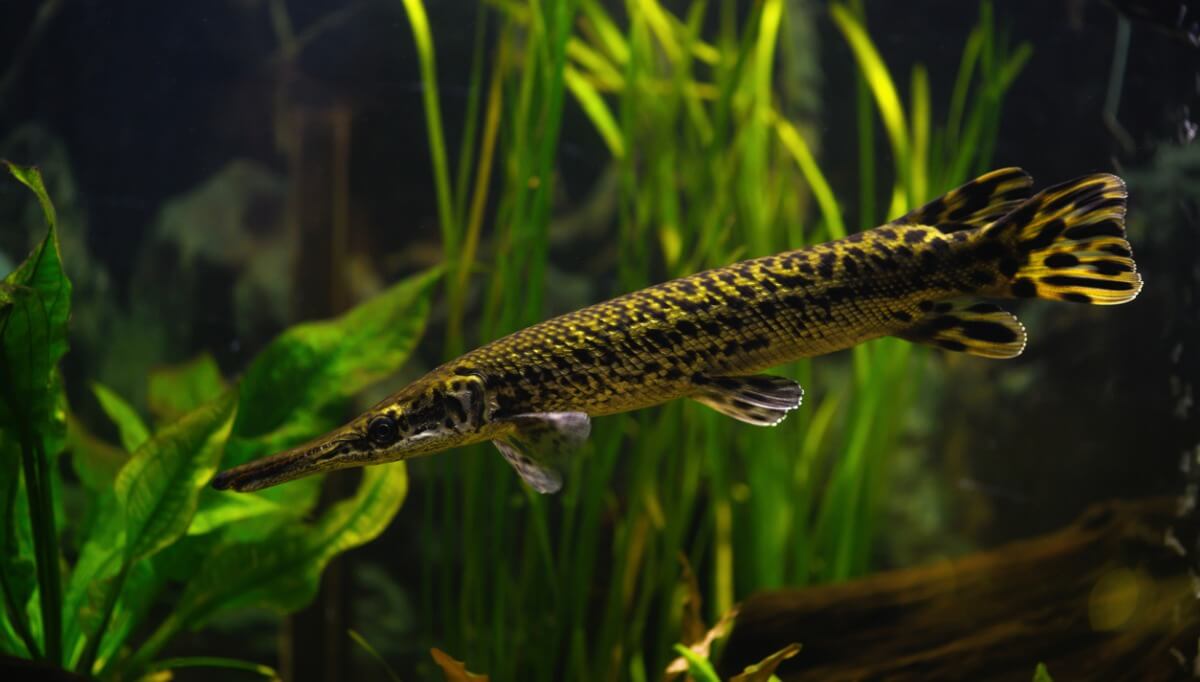
11. Stingray
Rays are a group of cartilaginous fish that belong to the order of the Rajiformes. Of the 4 families this group is divided into, only two of them have specimens that carry poisonous stingers in the first third of their tail. The greatest danger of this weapon doesn’t lie in its toxic potential, but in its size, as it can reach up to 30 centimeters (12 inches) in length.
The most notorious death by a stingray was that of Steve Irwin, an Australian conservationist and popularizer. He died because the sting of a specimen pierced his heart.
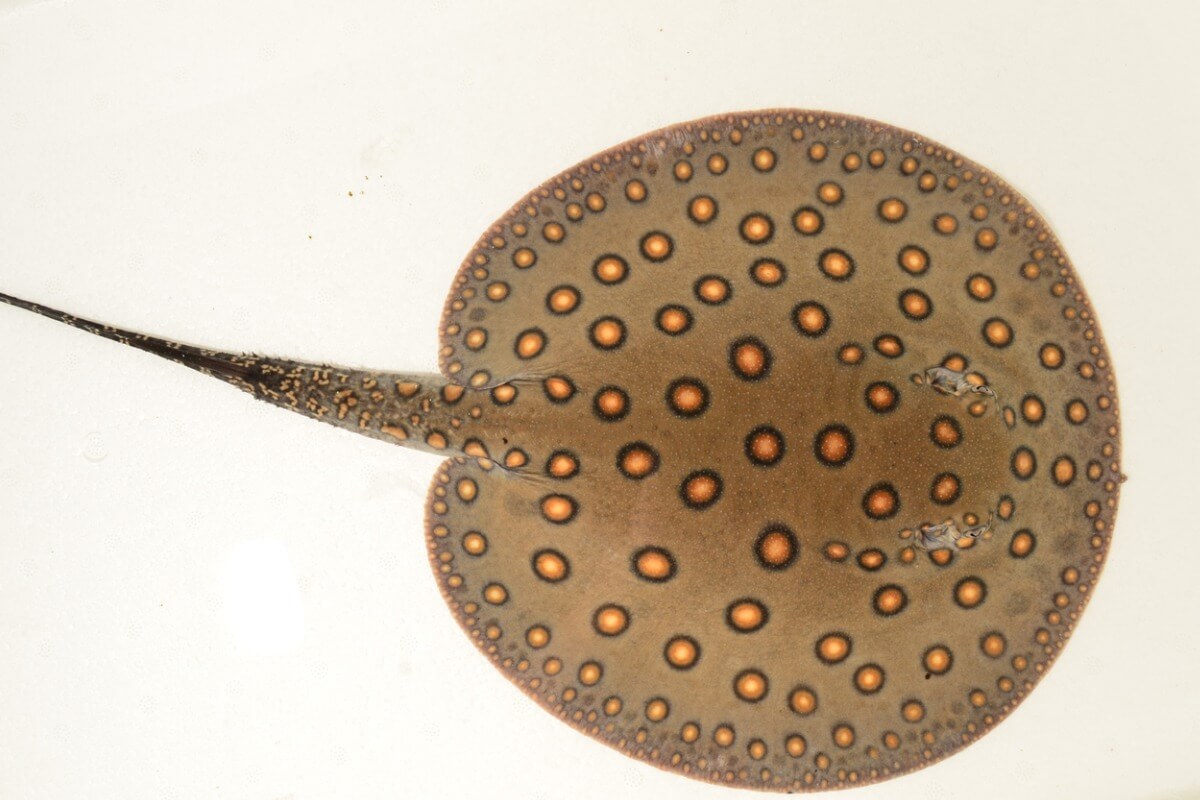
12. Moray eels
Moray eels are snake-shaped fish that can reach up to 150 centimeters (5 feet) in length. They’re excellent predators that feed on marine invertebrates and small fish.
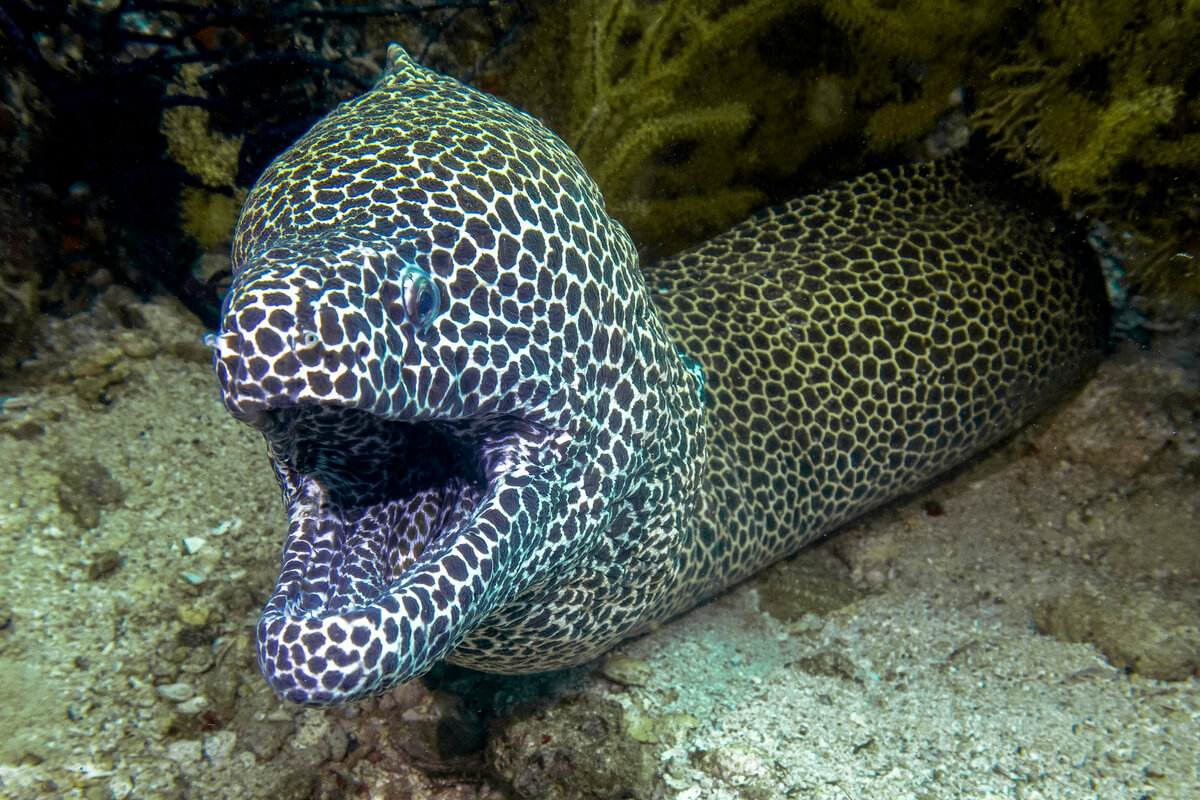
As you may have seen, attack and defense strategies in the aquatic environment are as fascinating as they are numerous. Interestingly, many of the world’s most dangerous fish pose a problem when ingested or in contact with them, not because of their potential predators. Certainly, in nature not everything is what it seems.
Fish are eminently aquatic vertebrates. They’re ectotherms which means they don’t produce metabolic heat, and breathe through their gills. Their surface is covered by scales, they have fins and their body is fusiform, as it’s completely adapted to life and locomotion underwater. More than 33,000 species have been recorded in this group, but do you know about the most dangerous fish in the world?
In their natural habitats, fish tend to feed on small invertebrates smaller than themselves – zooplankton, algae, debris, and other species of fish. None of these animals have humans as their main prey, but some have teeth, toxins, and other characteristics that could seriously injure one. Next up, we’ll show you the 12 most dangerous fish that you wouldn’t want to meet while out for a swim!
1. One of the world’s most dangerous fish: The pufferfish
Pufferfish aren’t dangerous because of their jaws or fangs, but they do stand out for their ability to swell up, and for their strong external spines. However, the real danger of many of these species is the toxic substances that they contain in their internal organs.
We’re talking about tetrodotoxin, a powerful and fast-acting deadly toxin. Studies have shown that this toxic compound is 160,000 times more potent than cocaine and rapidly blocks axonal conduction of sensory neurons. Poisoning in humans is caused by accidental ingestion of pufferfish organs in restaurants that treat raw fish.
There are more than 120 species of pufferfish, divided into 28 different genera.

2. Lionfish
The lionfish doesn’t include only one species, but 9 different ones, which are grouped together in the genus Pterois. Again, we’re talking about fish that don’t stand out for their physical “weapons”, but for the toxins they produce. The effect of its venom is inotropic, which means it affects muscle contractility, and also chronotropic, which means it alters the heart rate. This animal injects toxins through its body spines.
In humans, lionfish venom causes nausea, vomiting, confusion, dizziness, diarrhea, and chest pain. In the most extreme cases, heart failure can occur.

3. White shark (Carcharodon carcharias)
White sharks, also known as the great white shark, are one of the most famous and feared animals in the world. It isn’t surprising, because they’re almost 6 meters (nearly 20 feet) in length on average, a specimen is capable of ingesting up to 14 kilos (30 pounds) of meat with a single bite.
Despite the fact that it contains about 3,000 teeth in its oral environment, it rarely uses them against humans. Attacks on people by this species are not only anecdotal, but are very well documented.

4. Stonefish (Synanceia horrida)
This is another of the most dangerous fish in the world – not because of its jaws, but because of its venom. The stonefish is the most venomous Actinopterygii of the entire marine environment. Due to its neurotoxins and cytotoxins, direct contact with the fins of a specimen of this species is capable of killing a human being. However, it has been a long time since the last death due to contact with a stonefish.
Since 1959 there has been an antivenom against the toxins of these fish. This drastically reduces its deadly potential.

5. Tigerfish (Hydrocynus vittatus)
We move on to freshwater fish, as tigerfish inhabit the land water masses of Africa, where temperatures are high and there’s an abundance of prey. These animals reach up to 1 meter (3.3 feet) in length, have very powerful teeth, and are, incredibly, able to hunt birds in flight, jumping out of the water quickly and efficiently to grab them.

6. Piranhas
The term “piranha” encompasses several species of carnivorous fish that inhabit fresh waters in tropical areas. The most problematic specimens are usually of the genus Pygocentrus, but almost all attacks on humans occur when there’s blood in the water or the victim already has an open wound. It may surprise you, but most species of piranha don’t pose any danger to our species.

7. Electric eels (Electrophorus electricus)
The next member of the list is totally different to the rest, beause its danger doesn’t lie in its jaws or its poisons. The electric eel is a problem due to its ability to produce electric discharges, based on the reactions that take place in the Sachs and Hut organs. Deaths from these animals are extremely rare, but they have happened.

8. Tiger sharks (Galeocerdo cuvier)
The white shark may be the king of the seas, but its relative, the tiger shark, is the one that causes most problems for humans. These cartilaginous fish venture into harbors, canals, and shores, making encounters with people much more common. There are many studies that have recorded human death as a result of attacks by these animals.
This species is considered one of the most dangerous fish in the world. It’s the cause of an average of 50 attacks on human beings a year.

9. Barracuda
Barracudas are included in the genus Sphyraena, a group of fish that have lengths from 50 centimeters (1.64 feet) to just over 1 meter (3.3 feet). They’re the terror of the seas for small fish species, due to their unusual speed – from 0 to 43 kilometers/hour (27 mph) in a single burst – and their pointed teeth don’t give their prey a chance.

10. Longnose gar (Lepisosteus osseus)
Although it may give us a bit of a shock, the longnose gar doesn’t interact too much with humans. It can reach 200 centimeters (6.6 feet) and is a super predator in the rivers that it inhabits, in the United States. These animals are extremely long-lived, as they can live between 15 and 20 years, with a recorded maximum of 39 years. As a curiosity, it should be noted that they’re becoming popular as pets.

11. Stingray
Rays are a group of cartilaginous fish that belong to the order of the Rajiformes. Of the 4 families this group is divided into, only two of them have specimens that carry poisonous stingers in the first third of their tail. The greatest danger of this weapon doesn’t lie in its toxic potential, but in its size, as it can reach up to 30 centimeters (12 inches) in length.
The most notorious death by a stingray was that of Steve Irwin, an Australian conservationist and popularizer. He died because the sting of a specimen pierced his heart.

12. Moray eels
Moray eels are snake-shaped fish that can reach up to 150 centimeters (5 feet) in length. They’re excellent predators that feed on marine invertebrates and small fish.

As you may have seen, attack and defense strategies in the aquatic environment are as fascinating as they are numerous. Interestingly, many of the world’s most dangerous fish pose a problem when ingested or in contact with them, not because of their potential predators. Certainly, in nature not everything is what it seems.
All cited sources were thoroughly reviewed by our team to ensure their quality, reliability, currency, and validity. The bibliography of this article was considered reliable and of academic or scientific accuracy.
- Emilio Salceda y Aída Ortega. «Neurotoxinas: significado biológico y mecanismos de acción». Recogido a 13 de junio en https://web.archive.org/web/20141217154201/http://www.elementos.buap.mx/num74/pdf/29.pdf
- Simpfendorfer, C. (1992). Biology of tiger sharks (Galeocerdo cuvier) caught by the Queensland shark meshing program off Townsville, Australia. Marine and Freshwater Research, 43(1), 33-43.
- Keynes, R. D., & Martins-Ferreira, H. (1953). Membrane potentials in the electroplates of the electric eel. The Journal of physiology, 119(2-3), 315-351.
- Simões, E. M. D. S., Mendes, T. M. A., & Adão, A. (2015). Poisoning after ingestion of pufferfish in Brazil: report of 11 cases. Journal of venomous animals and toxins including tropical diseases, 20, 1-2.
- Cohen, A. S., & Olek, A. J. (1989). An extract of lionfish (Pterois volitans) spine tissue contains acetylcholine and a toxin that affects neuromuscular transmission. Toxicon, 27(12), 1367-1376.
- Rahn, H., Rahn, K. B., Howell, B. J., Gans, C., & Tenney, S. M. (1971). Air breathing of the garfish (Lepisosteus osseus). Respiration physiology, 11(3), 285-307.
This text is provided for informational purposes only and does not replace consultation with a professional. If in doubt, consult your specialist.








